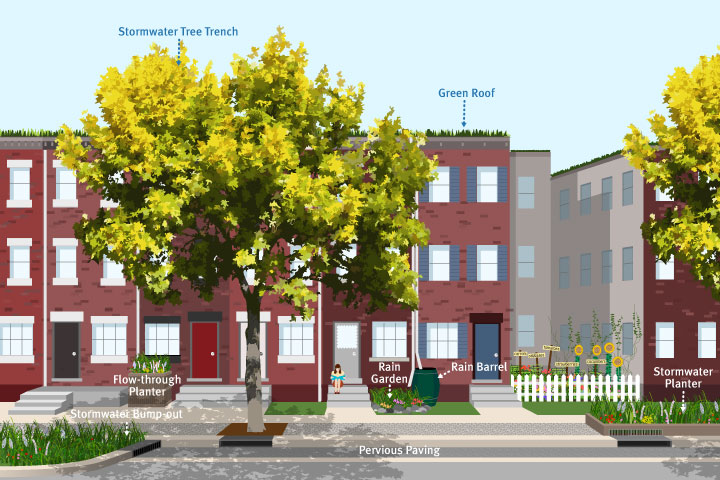Green stormwater infrastructure (GSI) is an approach to managing stormwater runoff in ways that mimic the natural environment as much as possible, using plants, soil, and stone to filter and manage stormwater more effectively, reducing how much enters our sewer systems, and protecting our rivers and streams.
Urban areas have lots of hard surfaces (roofs, roads, parking lots, etc.) that don’t allow water from rain, snow, and ice to soak into the ground naturally, so the runoff collects pollutants and litter on its way down the drain, and overwhelms our sewer systems, which can overflow into our rivers and streams.
Green stormwater infrastructure tools allow runoff to get soaked up by plants, filter into the ground, or evaporate into the air. Some systems also slowly release the water into a sewer once wet weather and the threat of overflows have passed.
Learn more about Stormwater Management →
GSI Tools
Integrating green stormwater infrastructure into a highly developed area such as Philadelphia requires a decentralized and creative approach to planning and design. Various tools can be implemented to accomplish this, including stormwater planters, rain gardens, and green roofs. All of these tools help to reduce runoff volume and filter pollutants by intercepting stormwater runoff before it enters the City’s combined sewer system.
See the types of green tools we use in Philadelphia →
How is GSI implemented?
In order to meet the goals set out in Green City, Clean Waters, and satisfy state and federal regulations, GSI is planned, designed, constructed, and maintained in different ways across the city. The main mechanisms can be classified under Public, Public-Private Partnerships, Incentives, Stormwater Regulations, and Other.
